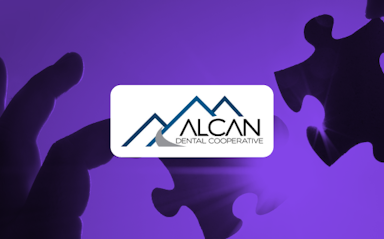A Complete Guide To Teledentistry: The Future of Virtual Dental Care
For more than 10 years, Teledentistry has been used by many dentists across the world to spread out the accessibility of their dental practices, reducing the oral health disparities between urban and rural communities.
Fast-forwarding to 2020, teledentistry has made the entire dental care delivery model more safe and convenient, along with lowering the overall cost of dentistry. Therefore, this ‘new normal’ brings a different facet to the industry through its multiple features and functionalities that could become key driving factors for dental practices in the coming times.
What is teledentistry?
“ Teledentistry is the use of electronic information, imaging and communication technologies, including interactive audio, video, data communications as well as store and forward technologies, to provide and support dental care delivery, diagnosis, consultation, treatment, transfer of dental information and education. ”
Teledentistry is, therefore, the combination of telecommunications and dentistry to initiate the safe exchange of clinical information between patients and dentists for a dental consultation and treatment planning remotely.
Leveraging teledentistry in the right way can solve the rising concerns of patients and practices across the country related to:
Access to dental treatments
Cost efficiency
Quality of dental treatments
Benefits of Teledentistry
With the outbreak of COVID-19, dentistry has realized the importance of addressing the disparities within the dental care system, resolving the oral health gaps, and rising patient concerns.
From the perspective of the practice, patients are the most valuable asset. With patients getting increasingly concerned about being infected from unnecessary exposure and traveling to dental practices, consulting with a dentist from the comfort of their home has become desirable.
Teledentistry is a remarkable solution to this concern, decreasing the cost and time devoted to travel and the unnecessary exposure and hassle of sharing common waiting areas to meet dental needs.
Through this, dental practices can not only maintain their appointment volume but also decentralize their access to a broad target market. Because in the end, it’s not merely the number of new patients that matters, it’s the patient experience that brings them back to the practice.
In this context, providing the desired patient experience and addressing their changing concerns immediately will keep them turning in more for their appointments.
In addition to the above benefits, the rise of teledentistry facilities at urgent care centers and hospitals ensures that patients receive quality treatment at an affordable cost, instead of being treated by an emergency room dentist.
How Can Dentists Leverage Teledentistry?

Now that dental technology is far more advanced and intuitive, teledentistry has unlocked a broader, innovative landscape for patients and dental practices alike. With teledentistry, dentists are now able to:
1. Maintain patient volume
Teledentistry helps dentists to keep their practice afloat in times of the pandemic by providing positive touchpoints. Online scheduling and telehealth consultation can keep your patients engaged with your practice without compromising their safety. Convenient access to care boosts patient compliance with the treatment offered by your practice. Thus, teledentistry helps to increase patient satisfaction by eliminating the need for patients to take extra time off from their daily hustles to see their provider, only to sit in a crowded waiting room until their name is called.
2. Triage patients
With a dental assistant evaluating each patient’s needs before their appointment, utilizing the best of teledentistry, dentists can check in with patients who don’t need an in-person visit. Checkups and treatment follow-ups are thus easier for dentists, as they can remotely communicate with the patients. The patients can also send their dentist information on how they are progressing after the operation or treatment taken. Thereby dentists can then focus on providing treatment to other patients who require emergency care rather than on check-ups.
3. Widen the potential market
Before teledentistry, dentists could only target a specific area that lies close to their geography. Because of teledentistry, dentists can break geographical barriers to treat more patients, no matter where they are located. Through video conferencing, dentists can provide remote consultations to patients who find it challenging to commute or for those who may not have dental clinics nearby.
4. Consult with specialists
If a dentist has doubts or concerns regarding any treatment a patient requires, they can consult with a specialist from their location in real-time via teledentistry. A specialist can shed light on the concerns raised and provide a second opinion to the dentist remotely. Teledentistry thus makes it easy for dentists to consult virtually with other professionals to provide the best dental care to their patients.
Teledentistry has, in many ways, made dental services more accessible, safer, and convenient for patients and has also rescued dental offices from possible revenue drops in the age of the pandemic.
Setting Up Your Practice for Teledentistry
Teledentistry offers a broad spectrum of features that could make the patient journey safe and convenient by delivering care to remote patients via video conferencing or phone connectivity. Here are a few that would help you set up your practice for safe patient navigation and increased payment collection.

1. Online Scheduling
With patients concerned more about their safety today, 44% prefer online scheduling and paperless onboarding to the traditional models. Through an intelligent software solution, you can set your office hours and ensure that patients schedule their appointments online. Some software also provides live HIPAA-compliant webchat to assist patients with booking appointments online. With online patient registration, you can optimize your time, and increase your patient’s convenience.
2. Digital Forms
Don’t you think your patients appreciate the convenience of arriving right at the time of their appointment and not ahead? Yes, patients no longer expect to come and wait for an appointment in advance, just to fill out forms. An intuitive software will help you collect pre-appointment information, consent, and medical history securely through digital forms. Having completed their forms prior to the appointment time, your patients can remain safely in their vehicles until their scheduled appointment is ready. This ensures a reduction in the time spent by your patients in the waiting room.
3. Teleconsultation
If you have been wondering about your patients missing their appointments in fear of getting infected from dental office visits, you can now put your worries at bay! With teleconsultation, you can keep your patients and staff 100% safe through virtual screenings. Teleconsultation enables you to meet patients face-to-face and engage with them through video conferencing. This feature also allows you to document clinical information using odontograms and smart note templates on the go. Going virtual, thereby, is a perfect way to retain appointment volume in the years to come.
4. Pay-by-Text
If your dental practice has struggled to collect outstanding patient balances over these critical times, this one is the right feature for you. With an automated AR management solution, your practice can reduce the overhead costs that are going unnecessarily to collection agencies. 80% of patients always read and respond to a text message; therefore, sending a friendly, personalized text message with a link to view and pay the invoice ensures better payment flexibility for patients and an increase in your payment collection rate.
5. All-In-One Teledentistry Software
The current struggles that you are facing to keep the practice running might be holding you back from thinking of a profitable software that can address all your changing practice needs. But choosing the right software tool to leverage teledentistry from the dozens available is vital to ensure safe and convenient patient journey and constant practice growth. Therefore it is advised to go for a software platform that’s comprehensive enough to meet all your growing needs on a long-term basis.
Teledentistry and Patient Care
Teledentistry has rewritten the ways practices have defined patient experience for the past few years. With teledentistry, dental practices can:
1. Improve the dental hygiene of patients
Patients are highly drawn to the convenience of dental care that comes to them, and the visits to dental offices began to drop with the onset of the pandemic and have remained on a steady decline. Leveraging telehealth communication to connect dentists with patients remotely has become an important tool for improving the oral health of patients conveniently.
2. Align with changing patients’ needs
Recent studies on the use of telehealth services have shown that 70% of patients feel comfortable and safe communicating with their dentists via text, email, or video as compared to consulting with them in person, and 76% patients prioritize their ease of access to dental care over the need to have face-to-face interactions with their dentists.
3. Improve access to dental care for patients
Around 20% of Americans do not have easy access to dentists and other medical services. Teledentistry fills this gap in accessing medical care by eliminating the need to travel long ways to meet dentists. With teledentistry, dentists can supplement areas where medical services are difficult to access, thereby decentralizing the patients’ access to dental care. It also allows dentists to expand their potential market to reach patients beyond their offices. Teledentistry has the capacity to increase dental practices’ services to a multitude of new patients.
4. Triaging appointment times for patients who need them
With teledentistry, dentists can triage patients according to their dental care needs, dedicating more time to patients who need an in-office visit to patients who are just in need of a virtual consultation. Teledentistry features thus reduce the chair time patients take to see dentists, helping them attend to more patients in less time.
5. Provide the same level of care to patients as in-office visits.
The quality of dental care provided through teledentistry is at par with the care extended through in-office visits making it the right option to switch to if you are looking for a solution to meet the changing needs of patients as well as one that has the same success rates of patients whether they have used teledentistry or not.
Teledentistry: Rules and Guidelines
Like other things in dentistry, every state does teledentistry according to its laws and regulations. When dentists and hygienists make recommendations on whether to incorporate telemedicine into their practices, they must be responsible for dealing with the laws and regulations for the states in which they work. The state dental board is the best source of knowledge in the field on the legal and ethical aspects of using teledentistry.
Quality of Care: The dentist is responsible for the safety and quality of services provided to patients using teledentistry technologies and methods, and retains the authority to ensure these. Services offered by teledentistry should be compatible with in-person services, and the provision of services using such modalities must comply with the laws on the privacy and protection of dental/medical information of a patient.
Supervision of Allied Dental Personnel: In the state where the patient receives care and where the dentist is licensed, the level of supervision of allied dental personnel will adhere to the relevant dental practice act. The dentist should have knowledge of the skills and credentials of the allied staff used and should be able to contact all the allied dental staff immediately while providing service and the patient receiving services. All services delivered by allied dental personnel should be consistent with the ADA Comprehensive Statement on Allied Dental Personnel.
Licensure: In compliance with the laws of the state in which the patient provides care, dentists, and allied dental staff who offer services through teledentistry modalities must be certified or credentialed. Service delivery via teledentistry must comply with the State’s scope of laws, regulations, or rules. The American Dental Association is opposed to a single nationwide federalized dental licensing program for teledentistry purposes.
Reimbursement: Dental insurance plans and all other third-party payers, in both public and private systems, shall offer compensation for services using (synchronous or asynchronous) teledentistry technologies and approaches provided to a covered individual to the same degree that the services would be covered if they were administered via personal interactions. Coverage for services offered by teledentistry modalities will be at the same level as coverage provided for services provided by in-person interactions, and will not be limited or restricted depending on the equipment used or the location of either the patient or the provider as long as the health care provider is accredited in the state where the patient receives treatment.
Technical Considerations: To facilitate the delivery of services via teledentistry modalities, dentists are encouraged to consider compliance with applicable data exchange standards. These include, but are not limited to, Digital Imaging and Communications in Medicine ( DICOM) requirements when choosing and using imaging systems, X12 / HL7 for knowledge sharing, and ICD-9/10-CM / SNOMED / SNODENT for accuracy in documentation.
Choosing the Right Teledental Software
Bringing together innovation with cutting edge technology, CS Virtual Office™ from CareStack is an all-in-one practice management software that supports all the features and functionalities, including online scheduling, teledentistry consultation, and patient collection using Text-to-Pay. Integrating CS Virtual Office™ into your dental practice will ensure regular appointment volumes and revenue during these COVID times. Thus, CareStack’s comprehensive enterprise-grade practice management software will undoubtedly assist you in leveraging each of the telehealth features, helping your dental office navigate to the new normal with confidence.





